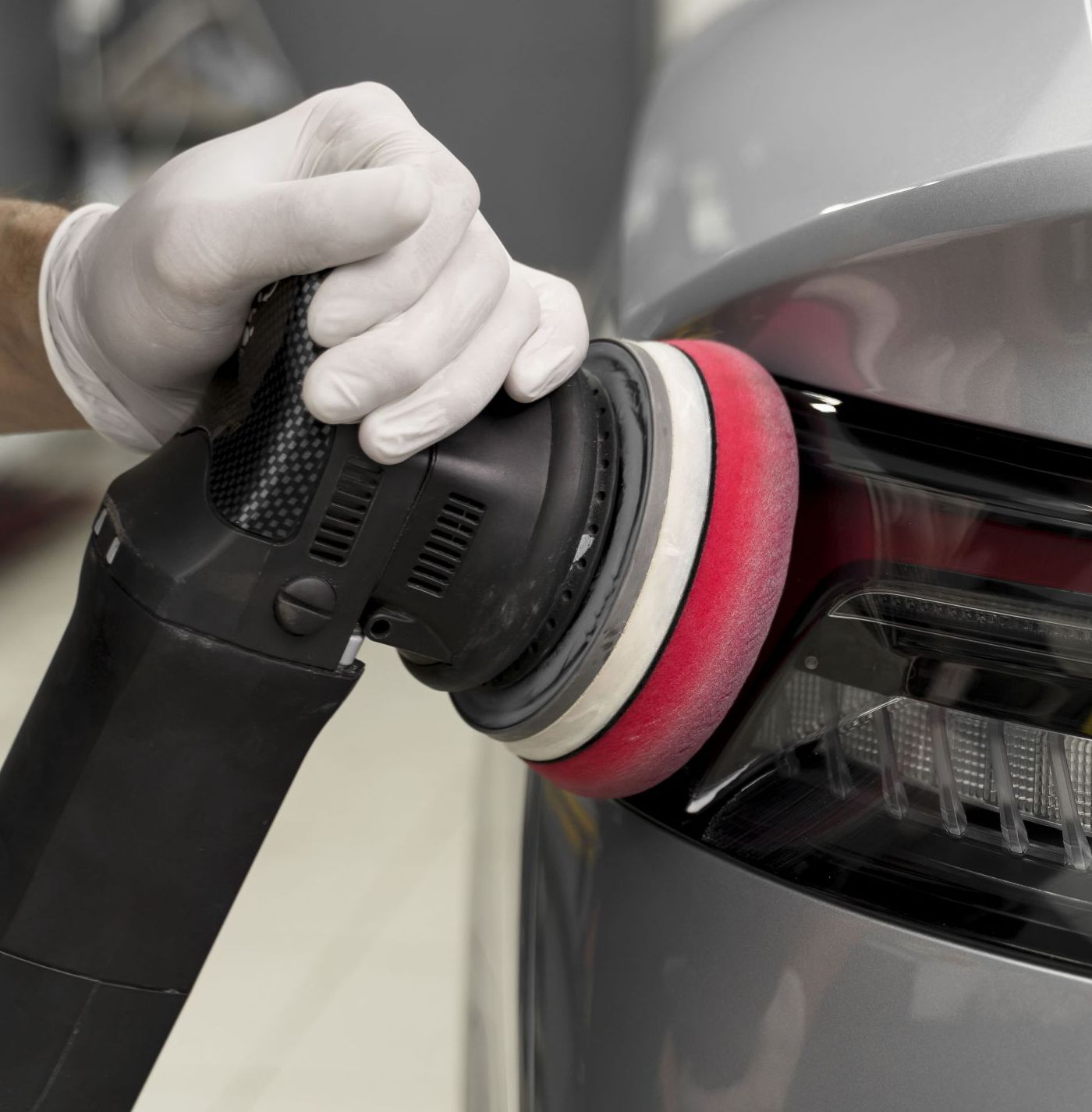Ceramic Coating
Ceramic Coating
Long-lasting protection. Deep, mirror-like shine.
Ceramic coating is a liquid polymer applied to a vehicle’s exterior that chemically bonds with the factory paint, creating a durable protective layer. Utilizing nano-ceramic technology, it forms a glossy, hydrophobic surface that repels water, dirt, and contaminants. This coating offers long-term protection against environmental hazards such as UV rays, oxidation, bird droppings, and road salts. It also enhances the vehicle’s appearance and makes maintenance easier. For optimal results, professional application is recommended to ensure proper surface preparation and effective bonding.
Ceramic Coating
Advanced Ceramic Coating Protection
Forms a hydrophobic layer that repels water, reducing water spots and promoting faster drying.
Adds a durable protective layer that helps minimize minor scratches and swirl marks.
Enhances the vehicle's appearance with a deep, reflective shine for a showroom-quality finish.
Shields the surface from damage caused by acid rain and other environmental contaminants.
Prevents moisture penetration, maintaining the integrity of the coated surface.
Reduces frost build-up during cold conditions for easier maintenance.
Keeps the surface cleaner for longer by preventing dirt and grime from bonding.
Provides a barrier that makes it easier to remove bird droppings and other bio-contaminants without staining.
STEPS OF CERAMIC COATING
Wash the Vehicle Thoroughly
Use a pH-neutral car shampoo.
Remove all dirt, grime, and loose contaminants.
Rinse and dry the car completely.
Decontaminate the Paint
Iron remover: Spray on the paint to dissolve embedded iron particles.
Clay bar treatment: Glide a clay bar with lubricant over the surface to remove bonded contaminants.
Paint Correction
Polish or compound the paint to remove swirl marks, scratches, and oxidation.
This ensures a smooth, defect-free surface before sealing it with the coating.
Surface Prep (Panel Wipe)
Wipe down the surface with IPA or a designated panel wipe to remove any polishing oils or residues.
This step is critical for proper bonding of the ceramic coating.
Use clean, lint-free microfiber towels for best results.
Apply the Ceramic Coating
- Apply a few drops of the coating onto an applicator pad.
- Work in small sections.
Spread the product evenly using a crosshatch pattern.
Let it sit for a few minutes until it begins to “rainbow” or flash.
Level or Buff Off the Excess
Use a clean microfiber towel to gently wipe off the excess coating.
Follow with a second towel to ensure a streak-free finish.
Do not let the coating dry on its own without buffing unless specified.
- Level or Buff Off the Excess
Cure the Coating
Allow the coating to cure in a dry, dust-free area.
Avoid water or moisture for at least 24–48 hours.
Full curing may take up to 7 days, depending on the product and environment.
Benefits
One of the main advantages of Ceramic Coating
-
1
Hydrophobic (water-repellent) properties.
-
2
Protection from UV rays, oxidation, and chemical stains.
-
3
Glossy, deep shine and easier maintenance.
-
4
Minor scratch resistance.

